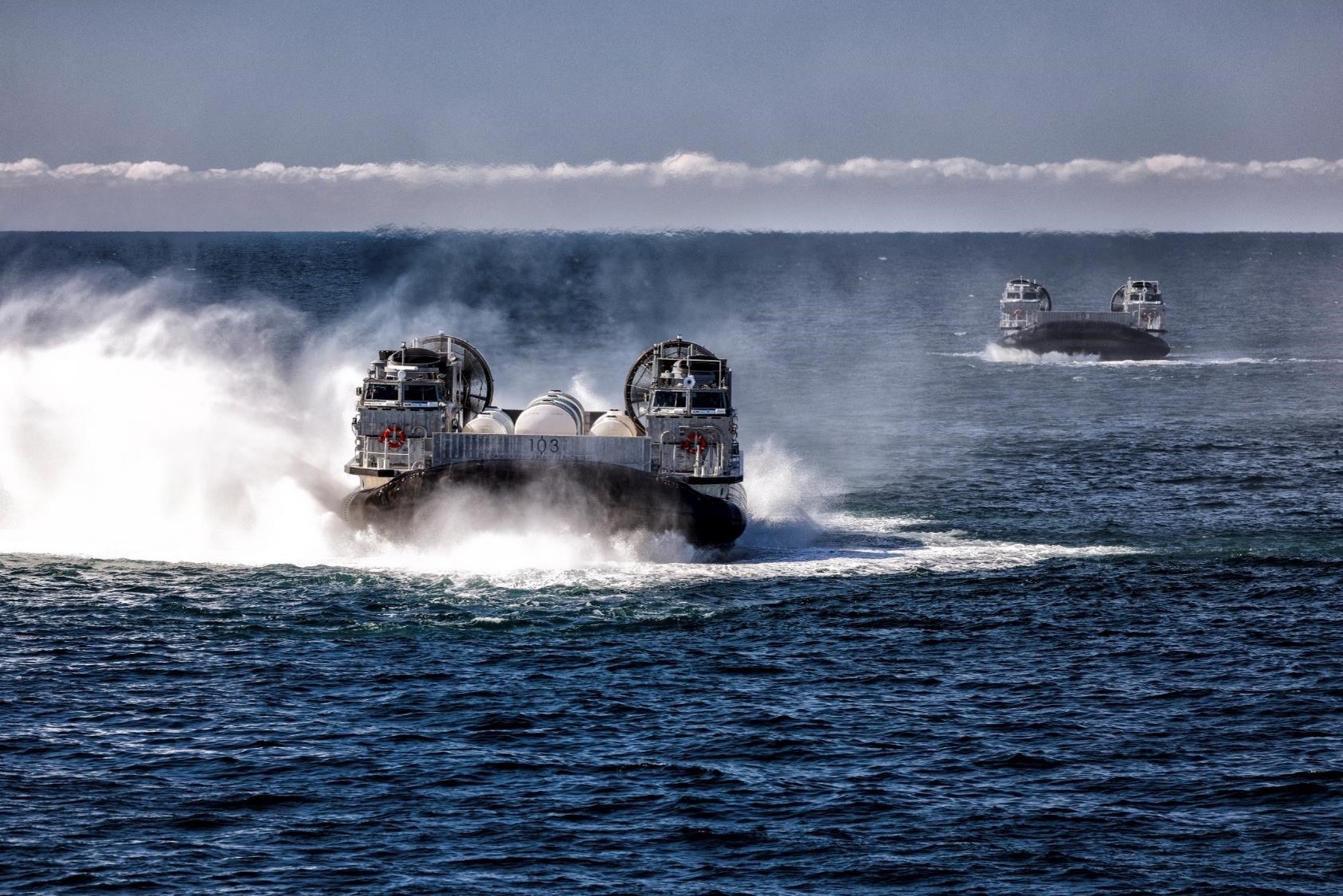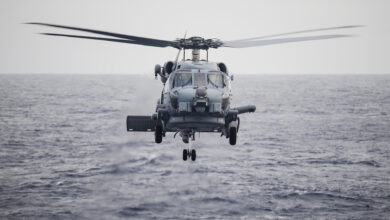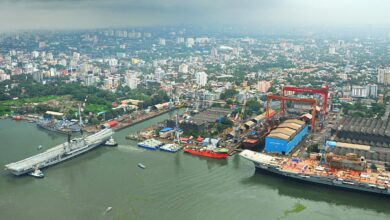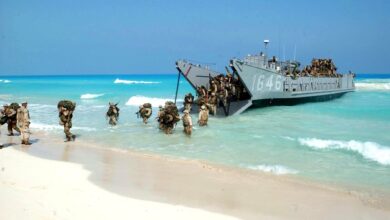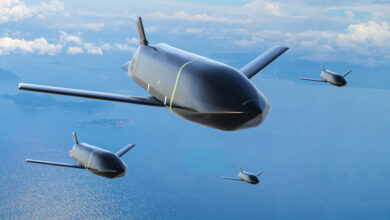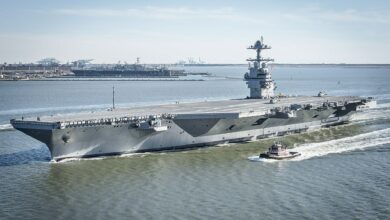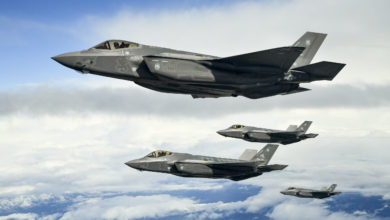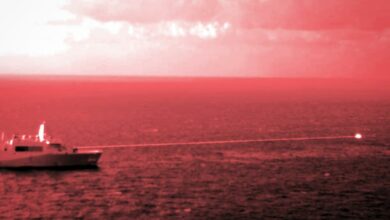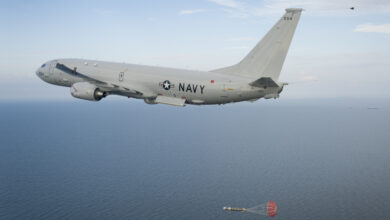The US Navy’s next-generation landing craft completed well deck interoperability testing recently, demonstrating its readiness for fleet integration.
The Ship to Shore Connector (SSC) hovercraft performed multiple “well deck entries and exits” from the USS Carter Hall “as part of the first phase of ship interface testing and helped validate user requirements,” the service revealed.
The Textron-built SSC will replace the Landing Craft, Air Cushion (LCAC) hovercraft (also a Textron product), which has been in service since the 1980s.

Greater Payload
The Texas-based defense firm delivered the first of 14 planned SSCs to the navy in 2020 as part of the Ship to Shore Connector program. The program envisions a fleet of hovercraft that require fewer operators, are easier to maintain, and have a greater payload-carrying capacity.
At 74 tons, the SSCs can carry over 10 tons more than its predecessor — including an Abrams tank — giving it an advantage over the LCAC during an amphibious assault.
The craft can move at 35 knots and carry 145 combat-armed Marines. Its skirt design reduces weight and drag, while corrosion-resistant aluminum materials are more easily available and decrease maintenance costs.

More Powerful Engine
Citing program manager Capt. Scott Searles, National Interest reported that the SSC has a more powerful Rolls Royce engine that delivers greater “speed, propulsion, and operational fuel efficiency.”
Additionally, the craft has been “specifically ruggedized for harsh environmental and military conditions.”
“It provides the capability to rapidly move assault forces within the littoral operational environment in support of the unified campaign plan missions,” Searles was quoted as saying at the 2022 Surface Navy Symposium.
“This ensures the joint force commander’s ability to conduct amphibious operations, including movement over ice, mud, river swamps, rocks, boulders, [and] obstacles up to four feet high. It’s a flying ship.”
To Join Assault Craft Unit 4
Two SSCs, meanwhile, have been delivered to the navy’s Assault Craft Unit 4, where they will go through further testing before being integrated with the fleet of LCACs.
USNI News quoted Searles as saying that the “real focus now for these craft and to deliver here to ACU 4 is to put them in the operator’s hands and allow those to be testing and training assets for their folks, getting sailors trained on how to operate these craft.”

